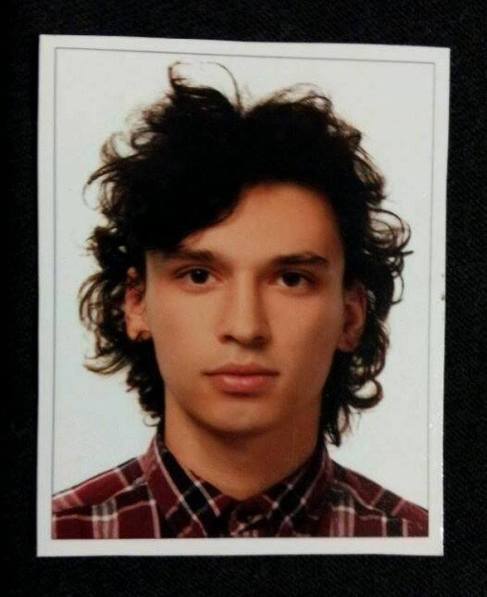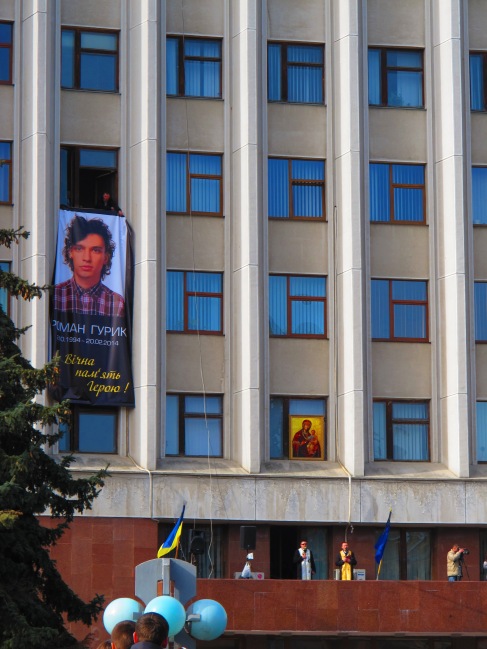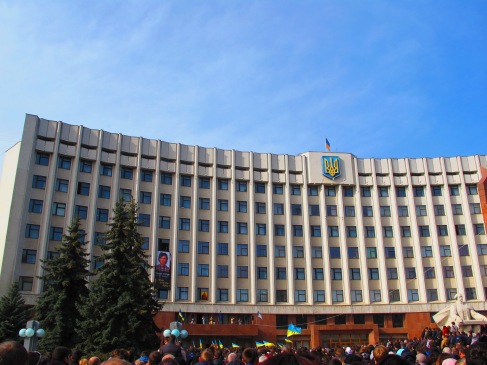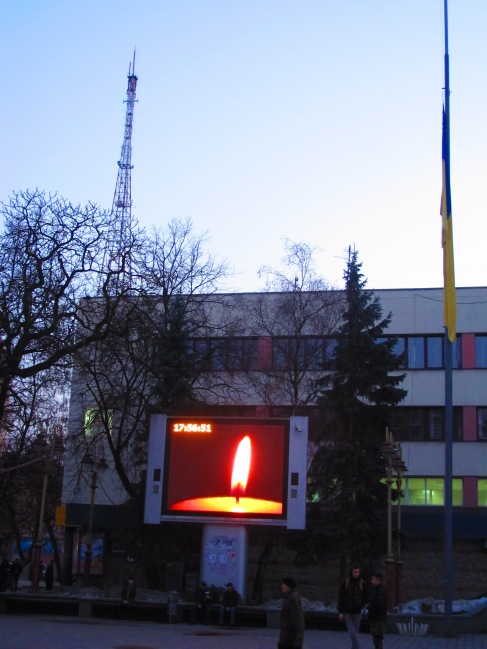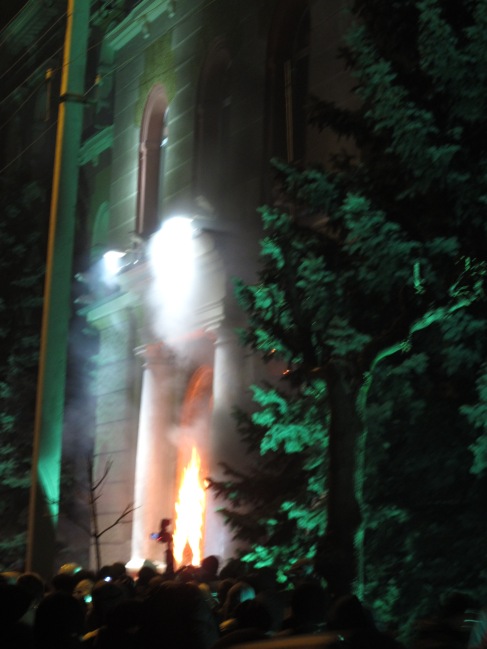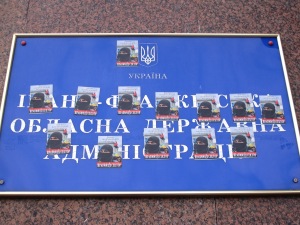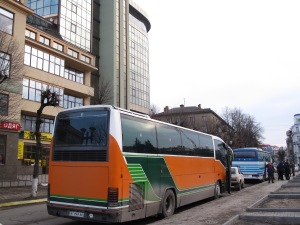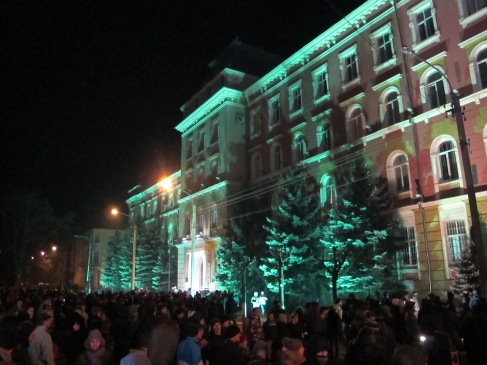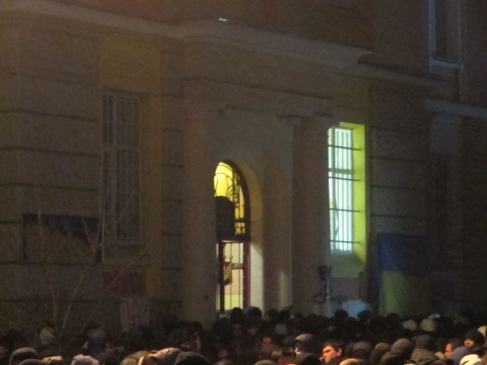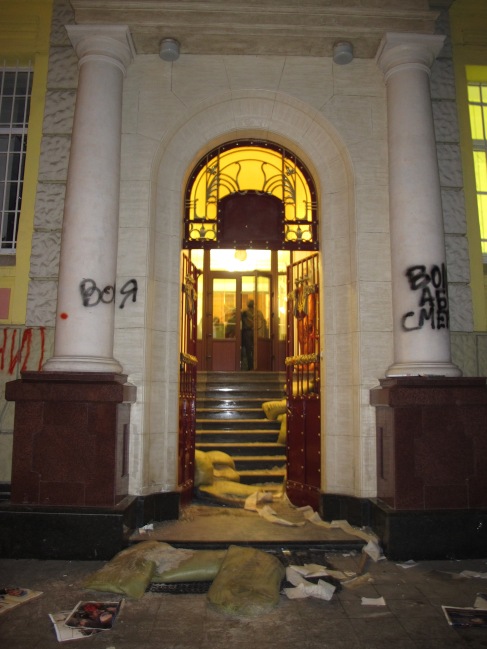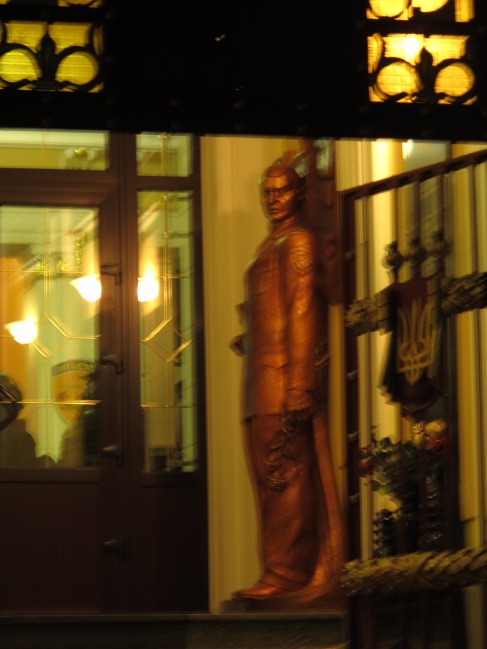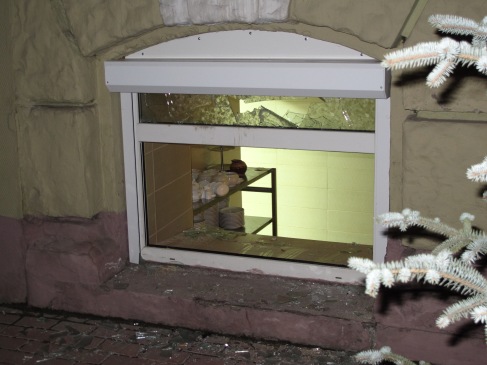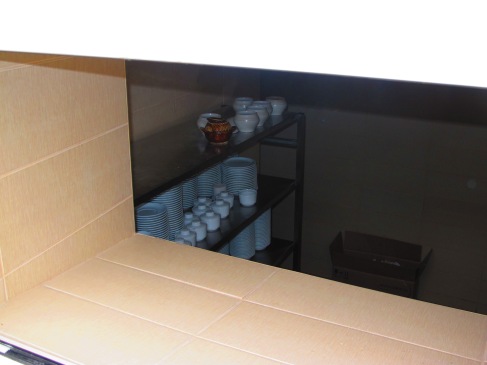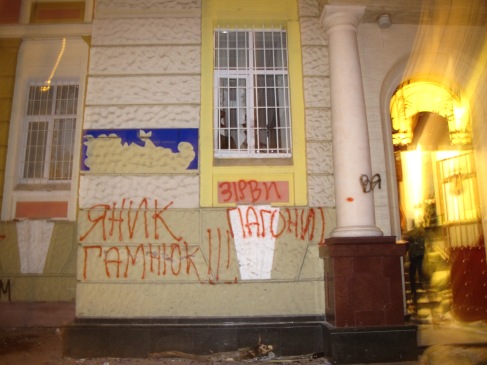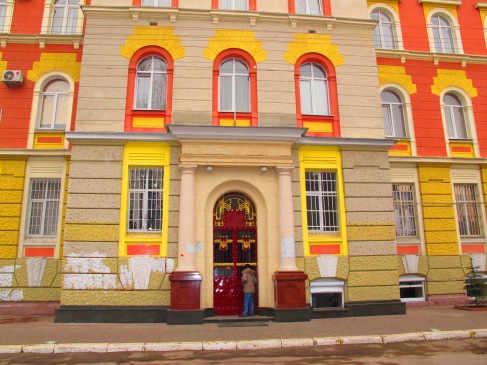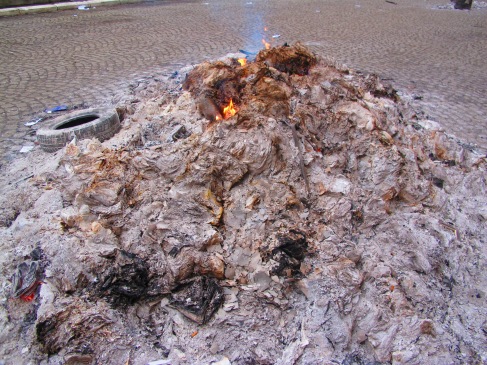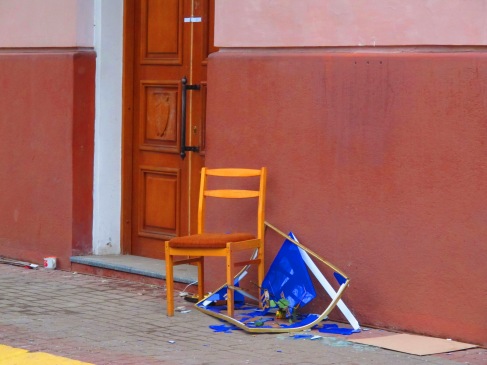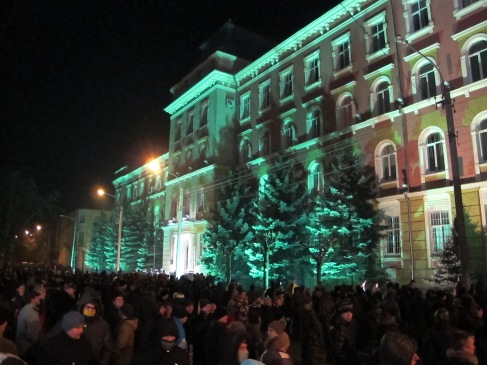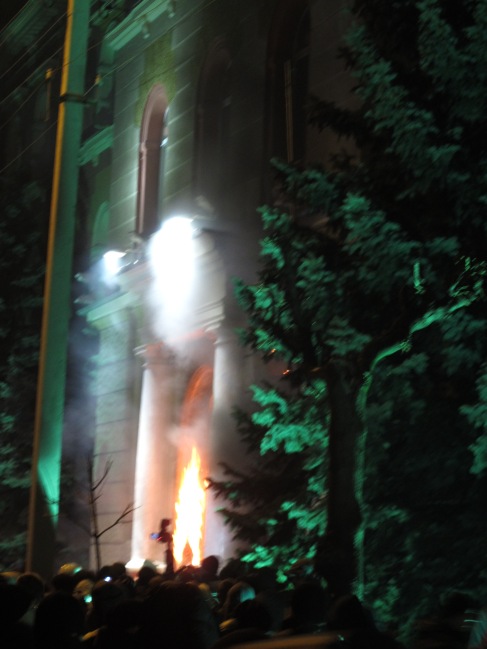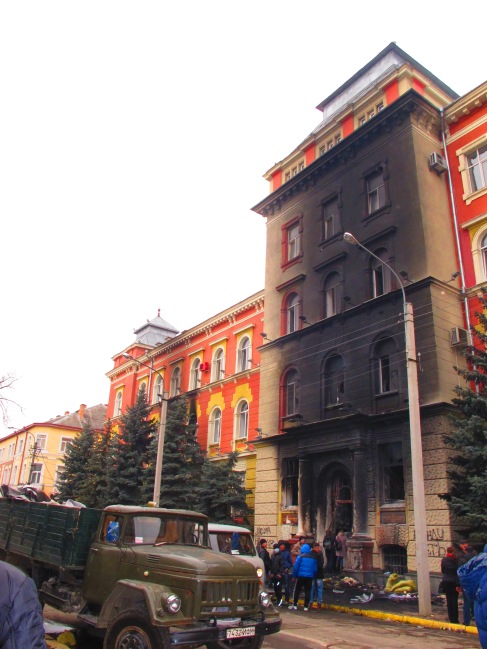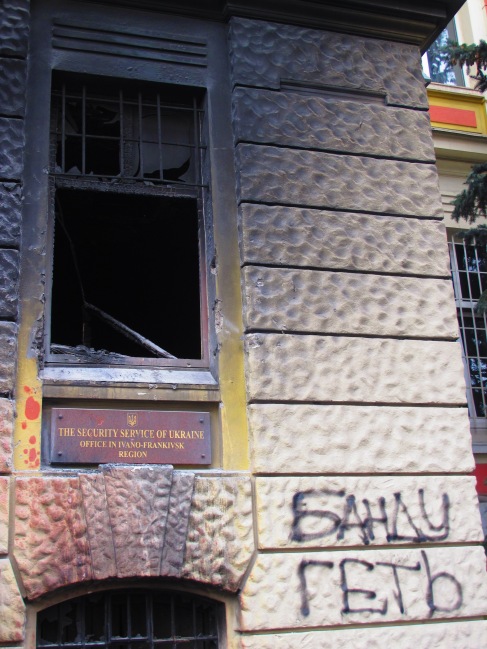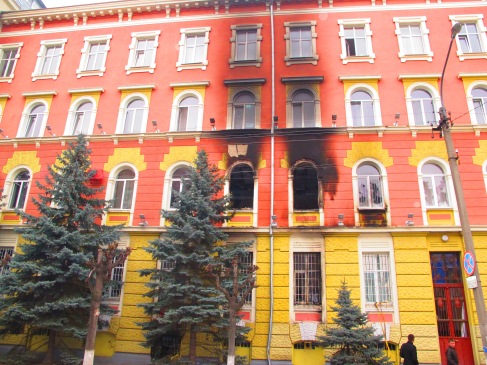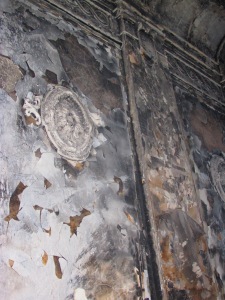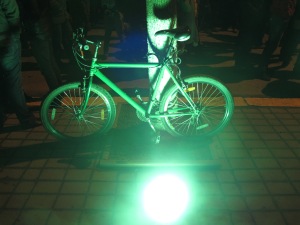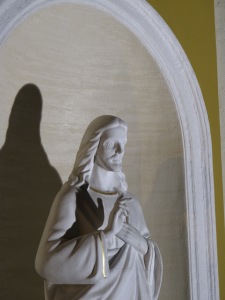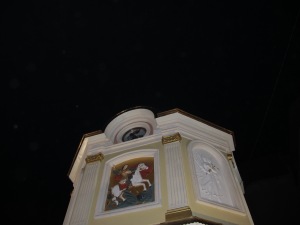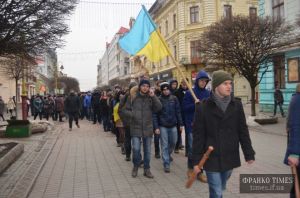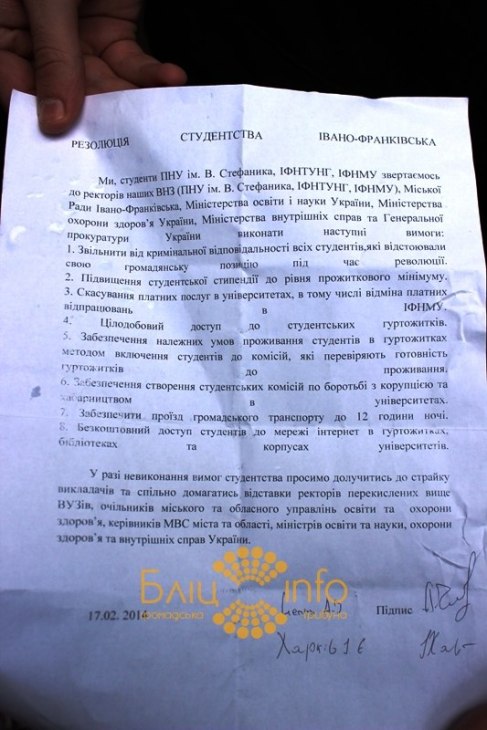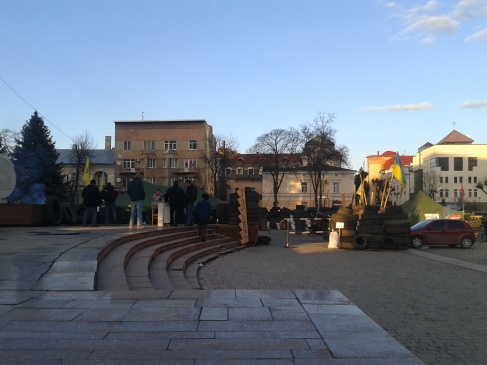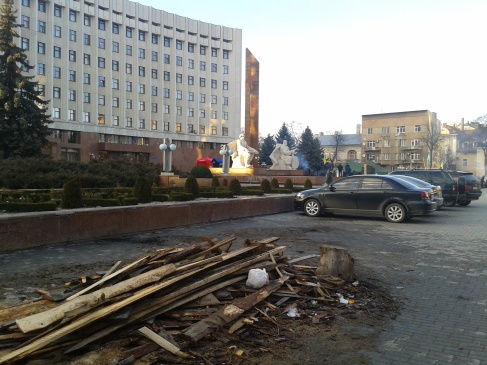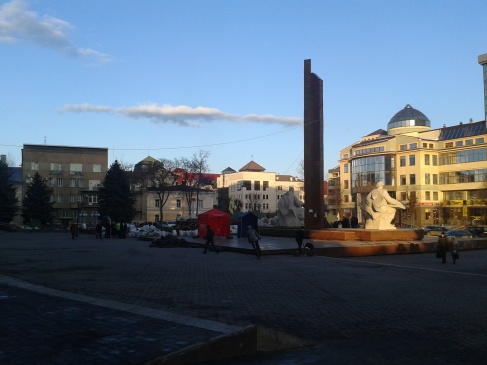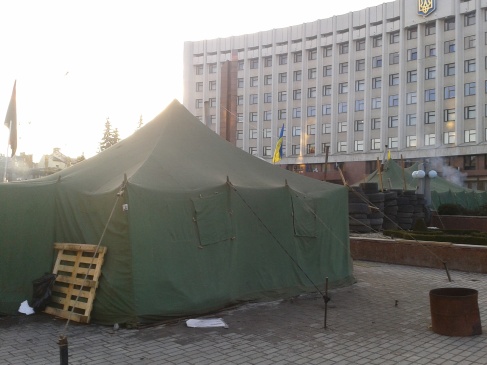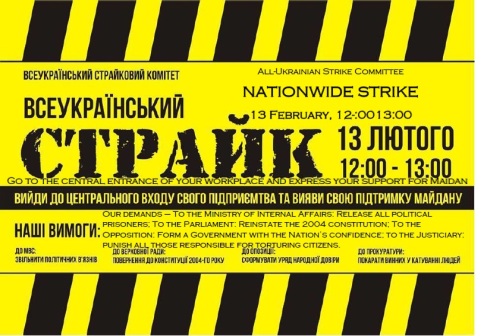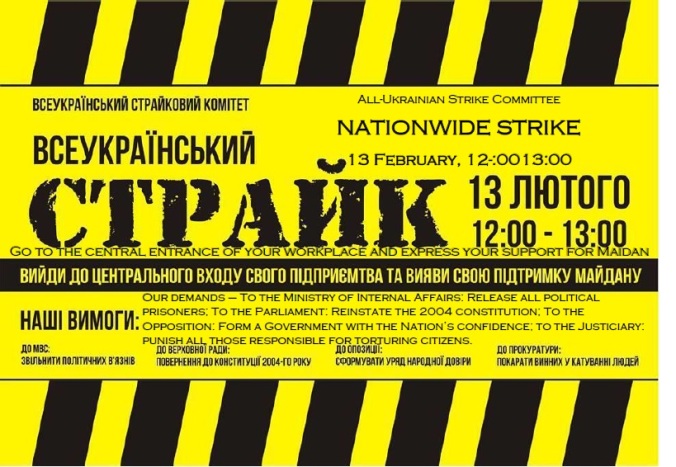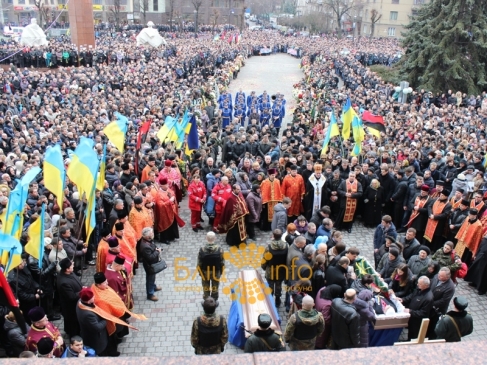 Roman Huryk (Роман Гурик) was a student in the second year of his philosophy studies in Ivano-Frankivsk who was killed on 20 February 2014 in Kyiv. He travelled to the capital with his father initially in December then returned in February when he was shot dead by a sniper as he shielded a female medic on Hrushevskoho Street. His final words entered on a social media website were: ‘It’s now or never. Everyone to Hrushevskoho Street. To death.’ Two memorial gatherings were held at the Prosvita Centre, the HQ of student resistance in the city, this weekend, gathering thousands of mourners. His funeral was held today in Ivano-Frankivsk, attended by tens of thousands on the city’s streets. His body was laid to rest in the city’s Memorial Square, close to the Franko Theatre in the city centre.
Roman Huryk (Роман Гурик) was a student in the second year of his philosophy studies in Ivano-Frankivsk who was killed on 20 February 2014 in Kyiv. He travelled to the capital with his father initially in December then returned in February when he was shot dead by a sniper as he shielded a female medic on Hrushevskoho Street. His final words entered on a social media website were: ‘It’s now or never. Everyone to Hrushevskoho Street. To death.’ Two memorial gatherings were held at the Prosvita Centre, the HQ of student resistance in the city, this weekend, gathering thousands of mourners. His funeral was held today in Ivano-Frankivsk, attended by tens of thousands on the city’s streets. His body was laid to rest in the city’s Memorial Square, close to the Franko Theatre in the city centre.
A video of his funeral procession and burial is available from 5 Kanal, while further links to reports and photographs from local media can be accessed here: videos, photos, more photos, including the one borrowed above, and more from the local newspaper Reporter.
The funeral procession began at Prosvita with Huryk’s body taken to the front of the regional administration building a short distance away. The procession continued after a service lasting around an hour issued from the balcony of the administration building to the cathedral, where a shorter service was held. The coffin, with its lid still of, as is traditional here, was then taken past Huryk’s home on Mazepy Street, then to the university nearby. From there the procession headed towards the Memorial Square, although – quite wisely – it did not take the most direct route, past the partly-burnt out offices of the police and security service. The procession at Prosvita started at 10 am. It was around 1:45 by the time it reached the Memorial Square. However, the procession was so long that some in the procession were still on the corner of Sakharova Street, near the security service building, by the time the burial was over.
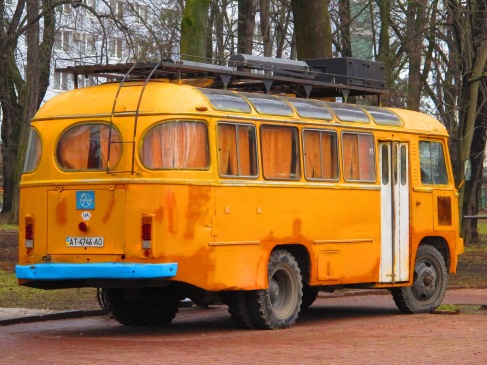
This bus provided sound to the masses gathered with speakers tethered to the roof, with recent rallies having been plagued by poor audio equipment and volume levels.
It was announced today that a new road in Ivano-Frankivsk, an extension of Pivdennyj Bulvar currently called vul. Projektna (Project Street) will be named in honour of Huryk, while the square in front of the Regional Administration building (ODA, aka The White House), will be renamed Heroes of the Maydan Square. The collective term for all the anti-government victims killed in Kyiv is the ‘Heavenly Company’ or ‘Heavenly Hundred’ (Небесна Сотня). A sotnia is a term first used in Cossack military for a unit of 100 fighters, with the term subsequently applied throughout the history of Ukrainian military formations.
Huryk’s burial place is symbolic, since it is the city’s pantheon of national heroes and fighters for the freedom of Ukraine. As the university’s website announced, Huryk will be buried ‘alongside heroes of the Ukrainian Sich Riflemen and the Ukrainian Insurgent Army (UPA) as a hero of Ukraine.’ The Sich Riflemen were a unit formed of Ukrainian paramilitaries who were incorporated into the Austrian forces in the First World War before forming the core of the Ukrainian military in Western Ukraine which was an independent republic in 1918/19. UPA is a more controversial organisation, active in 1942-1949, fighting occupation of Ukrainian lands, meaning it was involved in ethnic cleansing of the lands during Nazi occupation before becoming an anti-Nazi force and then fighting against Soviet occupation. It seems, however, the university made a mistake in aligning Huryk with UPA, since the Memorial Square represents more the broader Ukrainian Organisation of Nationalists (OUN), formed in 1929 in western Ukraine before splitting into moderate and radical factions in 1941.
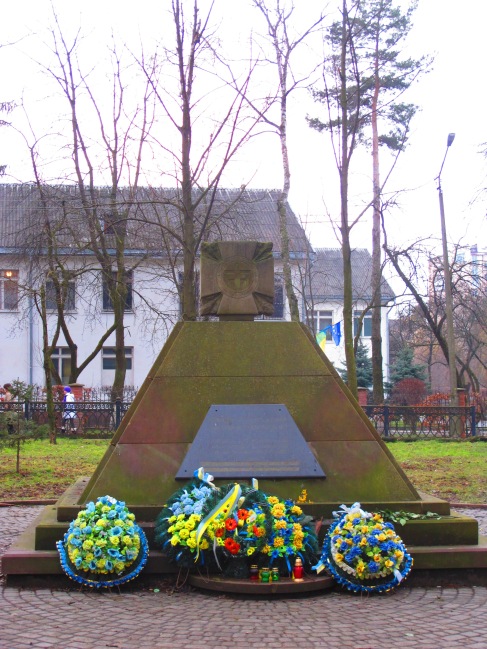
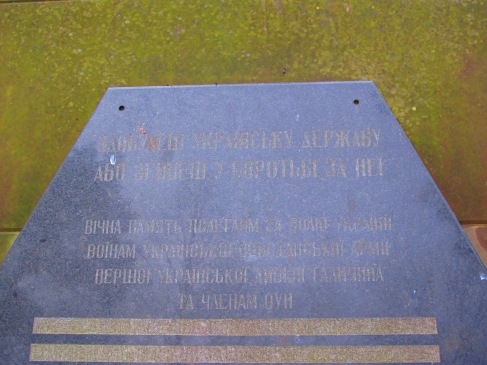
You will build a Ukrainian state or will die fighting for one. To the eternal memory of those who died in the name of a free Ukraine. The fighters of UPA, the First Ukrainian Division Galicia* and member of OUN.
* NB this was a division of the Waffen SS.
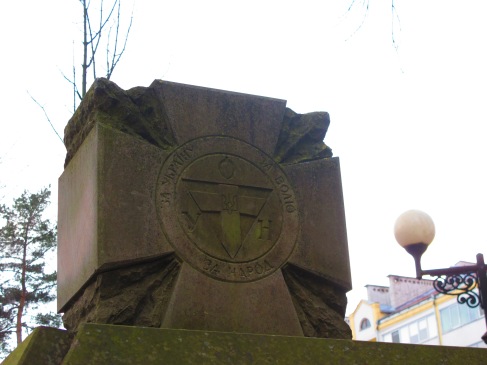
For Ukraine. For Freedom. For the Nation. – the emblem of the Organisation of Ukrainian Nationalists.
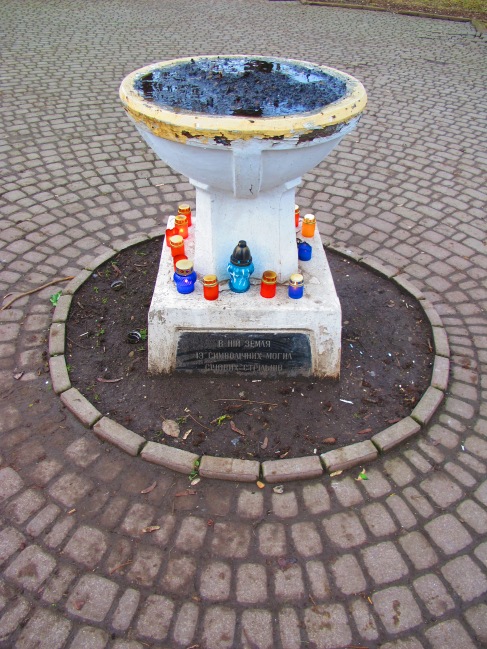
This contains earth from symbolic graves of Ukrainian Sich Riflemen.
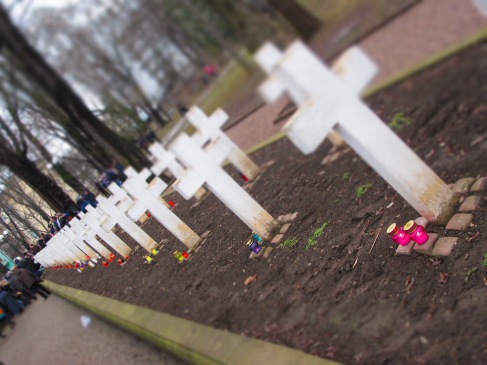
This is one of two sets of crosses dedicated to the Sich Riflemen. Huryk was buried at the end of this one.
It is clear to see how the tragic deaths in Kiev fit easily into a paradigm of western Ukrainian memory built around the idea of heroes who fought for Ukraine at various points in the twentieth century under various, contested nationalist banners.
However, what is intriguing about Huryk’s burial place, the Memorial Square, is the broader symbolism that it holds. However, these other ghosts of the past are currently inevitably overlooked. The Memorial Square has been built on the site of a former Catholic, largely Polish, cemetery which was adjacent to a church knocked down in the communist period and replaced by the Franko Theatre. The current Memorial Square largely lacks any trace of the previous graves, although a few have survived and remain in place. The largest structure within the Square is a chapel which was consecrated in 2002 ‘in honour of the memory of participants of national liberation struggles for the freedom of Ukraine’, according to the inscription.
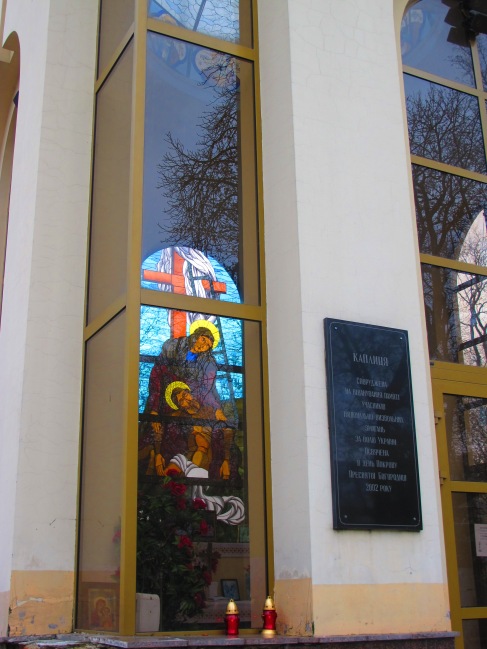
There remains in the Memorial Square, however, this particularly interesting gravestone, whose inscription to some extent reflects the narratives of heroism albeit in Polish.
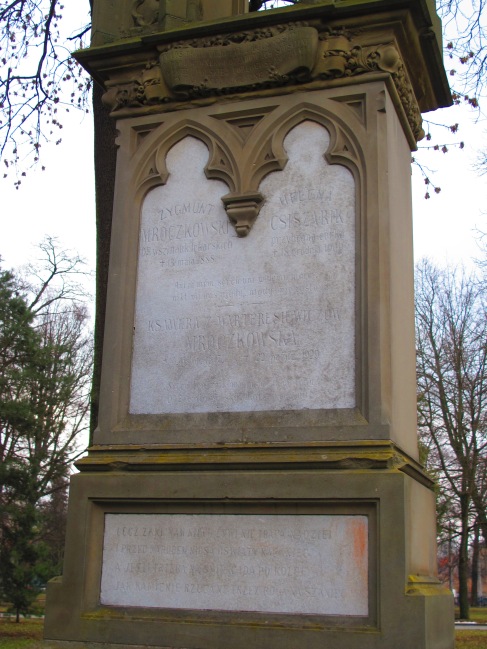
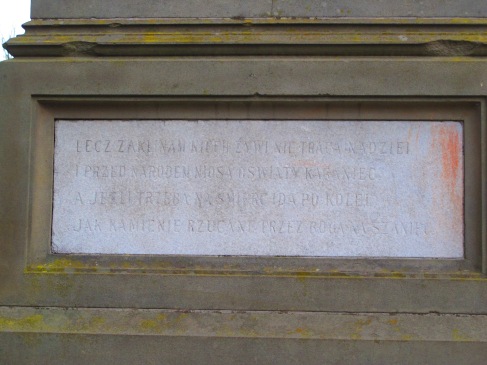
The grave is for Zygmunt Mroczkowski, a doctor of medicine, who died on 13 May 1888; his adopted daughter Helena Csiszarik and his wife, Ksawera Mroczkowska (née Wartersiewicz).
At the top of the headstone there is a plea to God for him to return Poles their fatherland, his grandchildren their family homelands and bless the Polish lands.
Below there is a plea taken from Polish Romantic poet Juliusz Słowacki’s Testament: May the living not lose hope and bear before the nation the torch of education; and if necessary they head to their deaths one by one like the rocks thrown by God at the ramparts.
These words from Słowacki bear an uncanny resemblance to those placed on social media by Huryk before his death who is buried a few metres away.
Further Polish traces at the Memorial Square include this monument to Poles who died fighting in the First and Second World Wars, as well as to those whose remains rest in this space. It was donated by ‘Rodacy’, or fellow Poles, while Huryk’s grave is visible behind it. This is a memorial to those whose traces remain barely visible in what was once a major Polish and Catholic cemetery, yet at the same time it reawakens those traces and raises the ghosts of the past, showing that these were for centuries shared Polish and Ukrainian spaces, where relations passed not without trouble. Indeed, those commemorated in this monument may well have died fighting against Ukrainians, as well as potentially alongside them against Russian incursion after World War One.
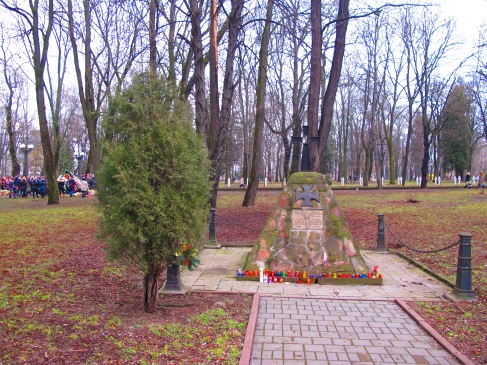
These spaces were also inhabited extensively by Jews, but few traces remain evident in the city of their lives here. The Kosmos cinema a few dozen metres from the Memorial Square and Franko Theatre was built on a Jewish cemetery, although no traces of that fact remain evident.
Still, the fact that Huryk now rests in a space that may be currently overtly overwritten by a narrative of Ukrainian heroism associated with nationalist movements, yet still contains traces of the multinational past of the city, brings hope that such a vision of a “European” city and memory can prosper. However, the Memorial Square also reveals the drama currently manifesting itself in terms of Ukraine’s future, its relations to its neighbours and the idea of Europe, as nationalist tropes become distinctly everyday features, intensified in the course of Euromaidan, here in western Ukraine.











